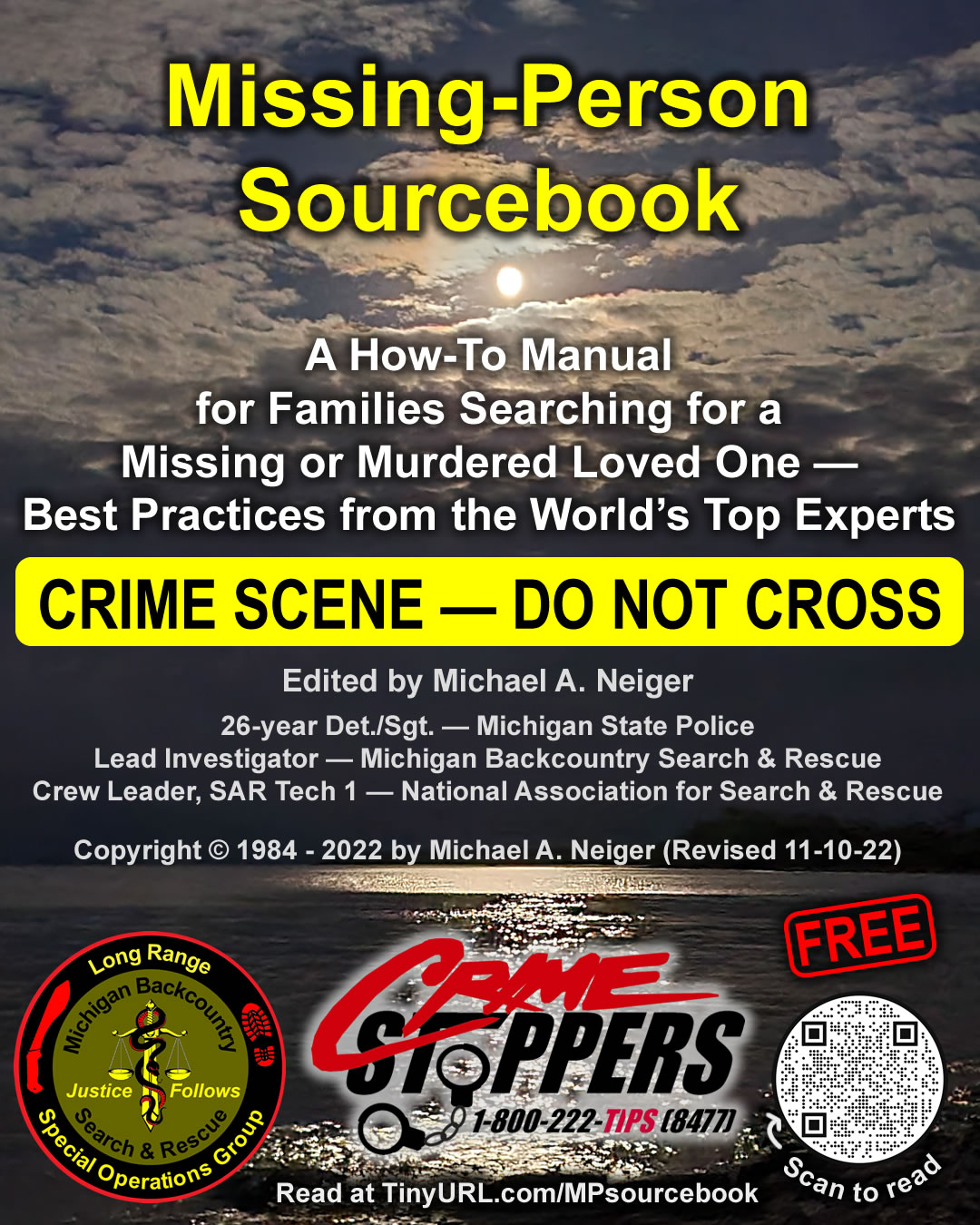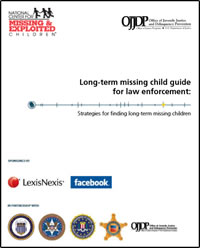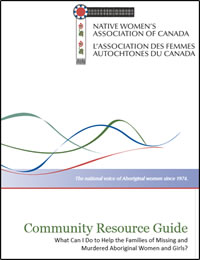
You're here: MibSAR :: M-P Sourcebook Table of Contents :: Events
How to Host an Event to Build Awareness of Your Loved One's Case
| << Prior Chapter | Next Chapter >> |
Holding an event can help promote awareness of a missing-person case.
Page contents:
- Missing Persons Cases: Proactive Media Guide, by the National Missing Persons Coordination Centre (NMPCC), Australian Federal Police (AFP), 2017, 2 pages.
- Long-Term Missing Child Guide for Law Enforcement: Strategies for Finding Long-Term Missing Children, edited by Robert G. Lowery, Jr., and Robert Hoever, National Center for Missing & Exploited Children (NCMEC), 2016, 226 pages.
- When Your Child Is Missing: A Family Survival Guide, by the Office of Juvenile Justice and Delinquency Prevention (OJJDP), (NCJ 228735) Fourth edition, 2010, 114 pages.
- Community Resource Guide: What Can I Do to Help the Families of Missing and Murdered Aboriginal Women and Girls?, by the Native Women's Association of Canada (NWAC), 2010, 81 pages.
 |
|
| Missing Persons Cases: Proactive Media Guide, by the National Missing Persons Coordination Centre (NMPCC) | |
Events
Events are a good way to encourage public support and media attention for your case.
Many events have a fundraising element to either support your personal search efforts, or donate to a charity that supports missing persons.
You may wish to seek assistance from political figures, influential members of the community or other high profile people who can help you gather media interest in your case.
If you do not wish to organise your own event, consider participating in existing events that raise awareness of missing persons such as International Missing Children’s Day or National Missing Persons Week.
Contacting other charities which hold events to raise awareness of missing persons or events impacting the community is another opportunity to take part in existing events.
 |
|
| Long-Term Missing Child Guide for Law Enforcement: Strategies for finding long-term missing children, edited by Robert G. Lowery, Jr., and Robert Hoever | |
Events and activities
If the case becomes a long-term missing case, there are still things that can be done to help keep the media interested in covering the story....
The most important thing is to keep the missing child’s story in the public’s eye.
Presenting the child’s story in a different way, makes it more likely to be used or aired by the media.
Remember media attention can increase when special events are held such as at the time of the child’s birthday or on the anniversary of the missing date.
Because holding such events and activities give the media something to cover, the family liaison should remind families of the power of this activity if they are not already planning on such events.
Examples of such events include candlelight and balloon vigils. Below are images from a candle light vigil held by a family. And the media may be drawn to families talking about how these dates are different and difficult without their child.
This is a great way to get the message of the missing child out there. These vigils can be done in public areas, such as parks or public properties with the permission of the relevant authorities.
Consider inviting public figures, representatives from the missing child clearinghouse or other child advocates in the area.
At some events families will attach bookmarks to the balloons used. The bookmark can contain photos, including an age progressed image if available, and all of the information described above.
This can be a cost effective way to spread information about the missing child. In one instance a bookmark was literally found hundreds of miles away.
There also needs to be information about who to contact with leads or information, such as the investigating law enforcement agency and/or NCMEC at 1-800-THE-LOST or 1-800-843-5678.
Additional ideas to share with families, if they have not already considered them, include:
- Tying the missing child’s story to something that will be broadcast repeatedly such as a popular song on the radio. Then every time the song plays, it will be a reminder the child is still missing.
- Getting the community involved. For example was the missing child on a sports team?
Can that team play a game in honor of the child?
If so create items such as buttons, wristbands or colored ribbons with the child’s picture and have attendees wear them to the game and team players wear them during the game.
- Enlisting the support of a celebrity in the community, local politician, local personality or some local person who is close to the investigation.
This can be the school principal, town mayor, fire chief, local prom queen, church leader or anyone who has influence in the community. The goal is to reach as many people as possible.
Over time parents may want to consider this involvement as a new way to raise awareness for their child’s case.
Securing help from people of this nature can give the story a new look and change the tone of the interviews just by bringing in someone new to discuss the case.
 |
|
| When Your Child Is Missing: A Family Survival Guide, by the Office of Juvenile Justice and Delinquency Prevention (OJJDP) | |
Public awareness events
Media attention generates leads and keeps your story in front of the public.
The following ideas are also excellent ways to involve volunteers in the search campaign.
- Appear on radio and television programs to discuss your child’s disappearance.
- Hold a press conference or other media event on your child’s birthday or on the anniversary of the disappearance.
- Prepare press releases or make personal statements about the disappearance of a child in another community.
- Prepare press releases relating to federal, state, or local legislation.
- Publish a letter to your child in your local newspaper.
- Ask radio stations throughout your state to play your child’s favorite song and dedicate it to your child.
- Hold a rally at your child’s school with music and prayers.
- Ask your child’s school to organize a letter writing campaign to politicians, the media, or your state legislature.
- Organize student marches to distribute fliers or posters.
- Develop buttons or Tshirts with your child’s picture and a special message to your child.
- Hold a prayer vigil.
- Hold a candlelight vigil.
- Organize a dance or a benefit auction.
- Give a special award to the law enforcement officer who served as your primary law enforcement contact.
- Ask sports teams in your area to include pictures of your child in their programs and to make public service announcements at all games.
- Plant a tree or dedicate a garden in your child’s name.
- Release heliumfilled balloons with your child’s name and other relevant information printed on them.
- Hold bowling tournaments.
- Hold running, dance, or other types of marathons.
- Ask local businesses or banks to dedicate a Christmas tree or a display of lights in honor of your child.
- Many local resources can help raise public awareness. Motorcycle clubs, civic organizations, scouts, and others have been generous in providing support and assistance to families of missing children.
 |
|
| Community Resource Guide: What Can I Do to Help the Families of Missing and Murdered Aboriginal Women and Girls?, by the Native Women's Association of Canada (NWAC) | |
Read pages 11-15 for some general information on events.
| << Prior Chapter | Next Chapter >> |
People who say it cannot be done,
should not interrupt those who are doing it.
— Author unknown

If you've been able to read this
Web page...
thank a Teacher;
If you've been able to read this
Web page in English...
thank a Veteran.
— Author unknown
Copyright © 1984-
March 23, 2021
by Michael A. Neiger
Contact Michael Neiger via e-mail at mneiger@hotmail.com
Top
You're here: MibSAR :: M-P Sourcebook Table of Contents :: Events